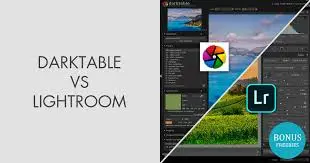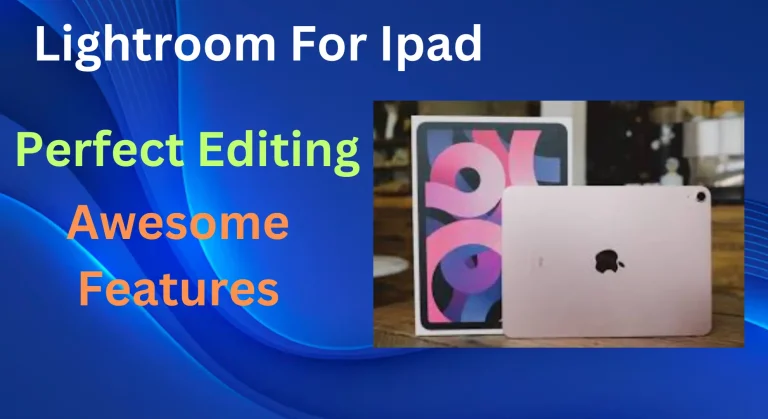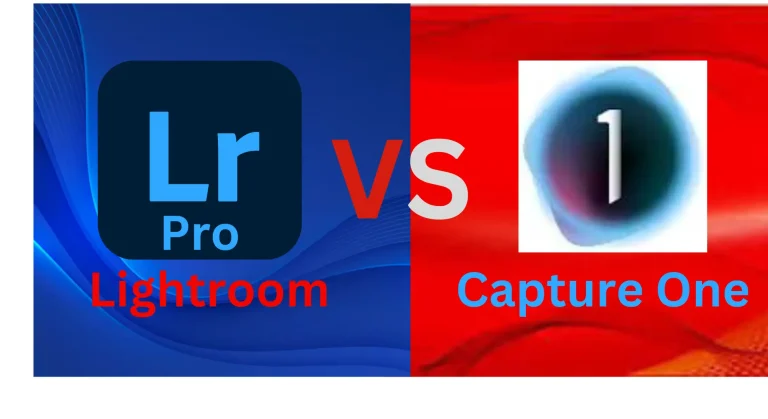How to Import Presets in Lightroom App 2024 [Mobile + PC] – A Step-by-Step Guide
![How to Import Presets in Lightroom App 2024 [Mobile + PC] – A Step-by-Step Guide 1 How to Import Presets in Lightroom App 2024 [Mobile + PC] – A Step-by-Step Guide](https://lrapk.pro/wp-content/uploads/2024/08/HOW-TO-IMPORT-PRESETS-IN-LIGHTROOM-1024x559.webp)
Import presets Lightroom are essential tools for both beginner and professional photographers. They offer powerful capabilities to enhance and transform your images, whether you’re working with intricate shots or simple photos. Import presets Lightroom can streamline your editing process and elevate your image quality significantly.
With the ability to import presets lightroom on both Android and iOS devices, you can achieve specific looks and styles effortlessly. This guide will walk you through the process of importing Lightroom presets on various platforms, ensuring you make the most out of these valuable editing tools. Dive into the article to discover how importing different presets can refine your images and enhance your creative vision.
How to Import Presets Lightroom on Desktop?
To effectively import presets Lightroom on your desktop or PC, ensure your system meets the minimum requirements for Adobe Lightroom. Presets are a crucial feature in today’s photo editing landscape, and Lightroom Classic (LrC) is designed for use on compatible PCs and macOS devices.
Follow these steps to import your Lightroom presets on desktop:
- Drag & Drop Method: Easily add presets by dragging and dropping them into the appropriate Lightroom folder.
- Using the Import Option: Utilize Lightroom’s built-in import feature to seamlessly add and organize your presets.
- Import Presets via Preferences: Access preset management through Lightroom’s preferences for a tailored import experience.
By adhering to these methods, you can efficiently enhance your photo editing workflow and achieve the perfect look for your images.
Method 1: Drag and Drop import Presets Lightroom Classic
Follow these steps to easily import presets Lightroom Classic using the Drag and Drop method:
- Download Your Favorite Import Presets Lightroom:
- Start by downloading the import presets lightroom you want to use and saving them to a folder on your Mac or PC.
- Locate the Preset Files:
- Open the folder where you saved the preset files on your computer.
- Launch Lightroom Classic:
- Open the Adobe Lightroom Classic app on your Mac or PC.
- Enable the “Import” Option:
- In Lightroom Classic, locate the “Import” option. Ensure that this option is enabled to allow preset importation.
- Drag and Drop Preset Files:
- You can now drag the preset file directly from the folder and drop it into the “Import” section of the Lightroom Classic app. Simply hold the mouse cursor over the file, drag it, and release it within the app.
- Automatic Detection and Import:
- Lightroom Classic will automatically detect the preset file and import it into the application.
- Using the Imported Presets:
- Once imported, the presets will appear in the Presets panel. To apply a preset, simply click on the desired preset, and Lightroom Classic will instantly apply the changes to your photo or video.
This method offers a quick and efficient way to get your presets up and running in Lightroom Classic, allowing you to start editing with your preferred settings right away.
Method 2: Recommended – Import Presets Lightroom Through Preferences
Follow these steps to import presets Lightroom Classic using the Preferences menu:
- Launch Lightroom Classic:
- Open the Adobe Lightroom Classic app on your Mac or PC.
- Access the Preferences Menu:
- Move your mouse cursor to the top toolbar and click on the “Edit” option.
- Navigate to Preferences:
- In the drop-down menu, click on the “Preferences” button to open the Preferences window.
- Go to the Presets Tab:
- Within the Preferences window, navigate to the “Presets” tab.
- Show Lightroom Develop Presets:
- Click on the “Show Lightroom Develop Presets” button. This will open the folder where Lightroom stores its preset files.
- Import Your Presets:
- You can now drag your downloaded preset files into this folder. Lightroom Classic will automatically recognize and add them to your Presets panel.
- Adjust Additional Settings (Optional):
- Within the Preferences window, you can also explore and adjust other settings related to presets, such as managing stored presets or choosing specific preset folders.
Using the Preferences method gives you more control over where and how your presets are stored within Lightroom Classic. This is a recommended approach for users who want to ensure that their presets are organized and easily accessible.
Method 3: Installing & Import Presets lightroom Using the “Import Presets” Option
Follow these steps to install and import presets Lightroom Classic using the “Import Presets” option. Most presets available for Lightroom are in .XMP or .lrtemplate formats:
- Go to the Develop Module:
- Open Lightroom Classic and navigate to the top right menu. Click on the “Develop” option to enter the Develop module.
- Locate the Presets Panel:
- On the left side of the Develop module, find the “Presets” panel. If you don’t see it, expand the menu bar to reveal the Presets option.
- Import Your Presets:
- Click on “Presets” and then select the “Import” option from the dropdown menu.
- Select Your Preset Files:
- A dialog box will appear. Navigate to the folder where your preset files are saved (either .XMP or .lrtemplate formats), select the presets you want to import, and click “Open.”
- Organize Your Presets (Optional):
- Lightroom Classic allows you to organize your presets by creating folders, making it easier to manage them. This step is optional but useful for keeping your presets well-organized.
- Use Your Imported Presets:
- All imported presets will now appear in the “Presets” panel. To apply a preset to your images or videos, simply click on the preset you wish to use, and Lightroom Classic will instantly apply the adjustments.
This method provides a straightforward way to import and manage your presets in Lightroom Classic, ensuring they’re easily accessible for your editing needs.
How to Import Presets Lightroom on Mobile [Android & iOS] – Quick and Easy Methods
Now you can use Lightroom presets on your android or iOS mobile easily by following these 3 simple & easy methods.
Method 1: Synchronization with Desktop App
To use your Lightroom presets on your mobile device, follow these steps to synchronize them with Adobe Creative Cloud:
- Upload Presets to Lightroom Classic on Desktop:
- Add your presets to the Lightroom Classic desktop app. Once added, they will be automatically uploaded to Adobe Creative Cloud.
- Log in to Adobe Creative Cloud on Mobile:
- On your mobile device, open the Adobe Creative Cloud app and log in with the same account you use for Lightroom Classic.
- Access Presets on Mobile:
- Your presets will now be synchronized and available in the Lightroom mobile app. There’s no need to manually upload presets to your mobile device; just log in to Adobe Creative Cloud, and your presets will be accessible on both mobile and PC.
This method ensures a seamless experience, allowing you to use your favorite presets across all your devices effortlessly.
Method 2: Import Presets lightroom Using the App
To import presets directly into the Lightroom mobile app, follow these simple steps:
- Open Lightroom Mobile:
- Download and launch the Lightroom app on your Android or iOS device.
- Create a New Project:
- Tap to open a “New Project” and upload the image or video you wish to edit with presets.
- Access the Presets Panel:
- At the bottom of your screen, locate and tap the “Presets” icon.
- Import Presets:
- Tap the three dots in the top right corner of the app interface. Select “Import Presets” from the dropdown menu.
- Select Presets File:
- A new window will pop up. Navigate to the folder containing your preset files, select the preset you want to import, and confirm your selection.
- Apply Imported Presets:
- The imported presets will appear in the Presets section. Tap on the desired preset to apply it to your image or video. Lightroom will process the preset application, which may take a few seconds.
- Further Adjustments:
- After applying the preset, you can make additional edits using Lightroom’s editing tools to fine-tune your image or video.
This method allows you to seamlessly import and use your favorite presets directly from the Lightroom mobile app, streamlining your editing process.
Method 3: Import Presets Lightroom Using “DNG” Files
Import presets lightroom and use presets in “DNG” format on your mobile device, follow these easy steps:
- Download DNG Presets:
- Obtain your import presets lightroom in “DNG” format. These files may contain multiple preset settings bundled together.
- Import DNG Files:
- Open the Lightroom app on your mobile device.
- Tap the “+” button or the import option (availability may vary depending on the Lightroom app version).
- Select DNG Files:
- Navigate to the folder on your mobile device where the DNG files are stored. You can select multiple DNG files at once by holding down and tapping on each file.
- Save Presets for Later Use:
- After importing, you can save each DNG file as a preset. Tap the three dots at the top right corner of the app, and choose the “Save Preset” option to keep it for future use.
- Apply the Preset:
- Click on the imported preset to apply it to your image or video. Wait a few seconds for the preset to be applied.
- Make Further Edits:
- Once the preset is applied, you can make additional adjustments using Lightroom’s editing tools.
- Save and Export:
- After completing your edits, you can save the preset and export your images or videos.
This method allows you to import and apply presets using DNG files, providing flexibility and convenience for mobile editing in Lightroom.
Features of Import Presets Lightroom
- Seamless Integration Across Platforms:
- Description: Import presets Lightroom is streamlined for both desktop and mobile versions, ensuring a consistent workflow across platforms. This cross-device compatibility allows users to access their presets whether they’re working on a PC, Mac, or mobile device.
- Unique Aspect: This feature supports a flexible editing environment, enabling photographers to maintain their editing style and settings seamlessly across different devices.
- Effortless Import Presets Lightroom Process:
- Description: The import process is user-friendly, involving simple steps to add new presets. On both desktop and mobile versions, you can easily drag and drop preset files or use dedicated import options within the app.
- Unique Aspect: The ease of import ensures that users can quickly incorporate new presets into their workflow without complicated procedures or technical issues.
- Support for Various Import Presets Lightroom Formats:
- Description: Lightroom supports a range of preset formats, including .lrtemplate for desktop and .dng for mobile. This flexibility allows users to import presets from different sources and ensure compatibility with their version of Lightroom.
- Unique Aspect: The ability to handle multiple preset formats provides greater versatility and access to a wide array of preset options.
- Organized Preset Management:
- Description: Once imported, presets are neatly organized into custom folders and categories within Lightroom. This organization facilitates easy access and efficient management of your preset library.
- Unique Aspect: The structured management system helps users quickly find and apply presets, enhancing productivity and streamlining the editing process.
- Preview and Apply Import Presets Lightroom :
- Description: Lightroom allows you to preview how presets will affect your images before fully applying them. This feature enables you to make informed decisions about which presets best suit your photos.
- Unique Aspect: The preview function helps in fine-tuning your edits and ensures that the applied presets enhance your images as intended.
- Syncing Across Devices:
- Description: Presets imported on one device can be synced across all devices using the same Adobe Creative Cloud account. This feature ensures that your entire preset library is available wherever you edit.
- Unique Aspect: Cloud syncing offers unparalleled convenience, allowing users to maintain a consistent editing experience across multiple devices without manually transferring presets.
- Customizable Import Presets Lightroom Categories:
- Description: You can create and customize categories for your presets, organizing them based on style, project, or personal preference. This customization helps in efficiently managing a large number of presets.
- Unique Aspect: Custom categories provide personalized organization, making it easier to locate and use specific presets tailored to different editing needs.
- Compatibility with Presets Lightroom Packs:
- Description: Lightroom supports importing preset packs, which often include multiple presets designed to work together for cohesive editing styles. This feature allows users to quickly apply a complete set of looks to their photos.
- Unique Aspect: Importing preset packs simplifies the process of achieving a consistent aesthetic across multiple images, saving time and enhancing the overall editing workflow.
- Batch Import Presets Lightroom Functionality:
- Description: Lightroom enables batch importing of multiple presets simultaneously. This feature is particularly useful for users who want to add an entire collection of presets in one go.
- Unique Aspect: Batch import reduces the time and effort required to set up a large preset library, streamlining the process of expanding your editing toolkit.
- Regular Updates and Support:
- Description: Adobe provides regular updates and support for Lightroom, ensuring compatibility with new preset formats and addressing any issues that arise during the import process. This ongoing support helps maintain a smooth user experience.
- Unique Aspect: Regular updates and responsive support ensure that the import process remains current and effective, adapting to new developments in preset technology and user needs.
By understanding these features, users can make the most of import presets lightroom functionality, ensuring a smooth and efficient workflow while enhancing their photo editing capabilities.
Pros and Cons of Import Presets Lightroom
Pros
Simple and Easy to Use:
- Presets streamline the editing process with a single click, making complex adjustments effortless.
Time-Saving:
- Quickly apply consistent looks to multiple photos or videos, saving significant time compared to manual adjustments.
Professional-Level Settings:
- Presets offer high-quality, pre-defined settings that can enhance your photos with professional results.
Adjustable:
- Presets can be fine-tuned and modified to fit your specific needs, providing flexibility in your editing process.
Cons
Potential Errors During Import:
- Issues may arise when importing presets, such as file compatibility errors or import failures.
Bugs and Technical Glitches:
- Presets and their application might occasionally encounter bugs or technical issues, affecting their performance and usability.
Benefits of Import Presets Lightroom
Importing presets into Lightroom can significantly elevate the quality of your images, whether you’re working with older shots or your latest captures. Here’s how this process enhances your editing experience on both desktop and mobile:
- Efficient Complex Edits: Streamline intricate editing tasks by quickly applying various presets. This efficiency allows you to tackle complex adjustments with ease, enhancing your workflow and productivity.
- Consistent Style and Look: Maintain a cohesive aesthetic across all your images with the application of presets. This consistency helps establish a recognizable style that resonates with your audience and enhances your brand.
- Professional Quality: Effortlessly achieve high-quality, polished results that give your photos a professional edge. With presets designed to mimic film styles or enhance digital clarity, your work can reflect a refined, artistic touch.
- Time-Saving: Achieve impressive results swiftly, allowing you to focus more on the creative aspects of photography rather than getting bogged down in time-consuming edits. This efficiency can be particularly beneficial when working on multiple projects or tight deadlines.
- Learn and Grow: Experimenting with different presets allows you to explore new editing techniques and expand your skill set. This hands-on learning fosters growth as you discover what works best for your artistic vision.
- Creative Freedom: Infuse your photography with creativity by using presets as a source of inspiration. They can spark new ideas and lead to imaginative edits, allowing your unique style to shine through in every image.
By importing Lightroom presets, you not only enhance the visual quality of your images but also optimize your editing efficiency and creative potential. This powerful tool transforms your editing process, enabling you to produce exceptional work that stands out in a competitive landscape.
Conclusion
By carefully following the methods discussed above, you can successfully import and use Lightroom presets on both mobile and PC platforms. Applying these pre-made presets allows you to save valuable time by quickly applying consistent edits to your images. Customize your photos as needed, and, once you’re satisfied with the results, you can export and save both your images and preset settings for future use. This streamlined process enhances your editing efficiency and ensures your presets are readily available for ongoing projects.




![Best Top Editing 11 Apps for Android in [2024] 5 Best Top Editing11 Apps for Android in [2024]](https://lrapk.pro/wp-content/uploads/2024/08/Best-Editing-11-Apps-for-Android-in-2024-768x419.webp)

![Create a Lightroom Collage: Step-by-Step Guide to Stunning Photo Collages [2024] 7 Create a Lightroom Collage: Step-by-Step Guide to Stunning Photo Collages [2024]](https://lrapk.pro/wp-content/uploads/2024/08/Easy-Steps-To-Collges-in-Adobe-Lightroom-768x419.webp)